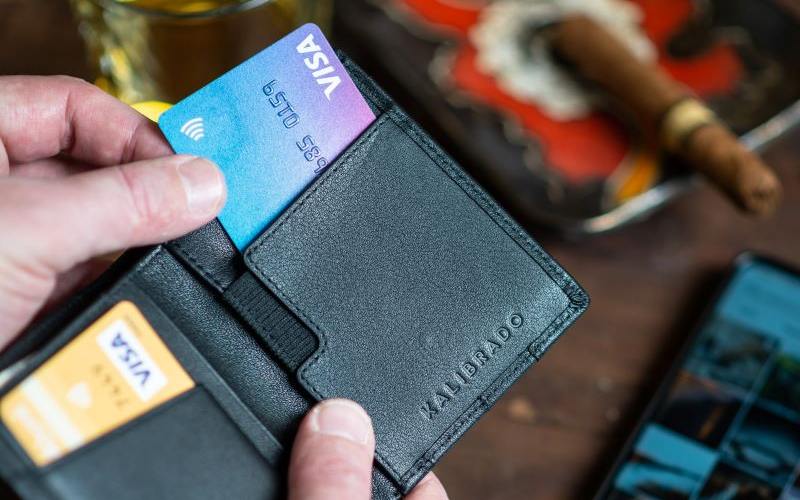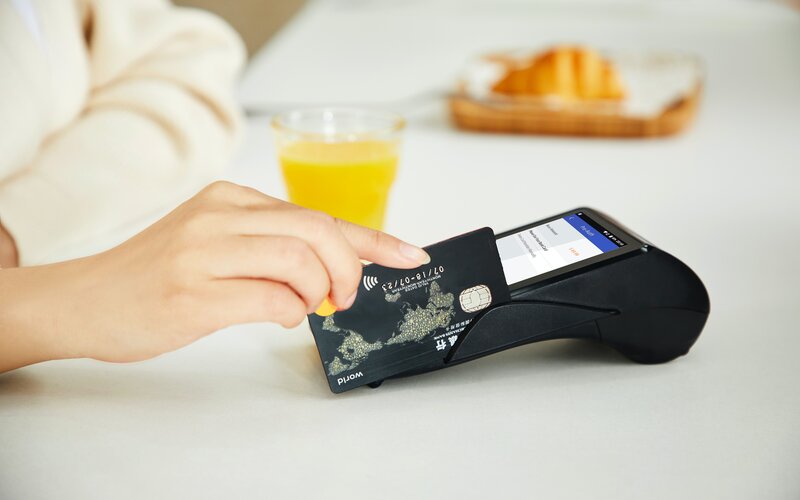While they function similarly as payment processors, there are some subtle differences in terms of their rewards programs, exclusive benefits, and global acceptance. Read our in-depth evaluation of Visa and Mastercard to understand how they compare and which one might be the better fit for your financial needs.
Popular credit cards
If you're applying for a credit card in Australia, there's a good chance it will be part of either the Visa or Mastercard network. Visa and Mastercard dominate the Australian payments landscape, collectively processing the vast majority of credit card transactions.
At a basic level, both networks offer similar functionality: they facilitate payments, provide fraud protection, and are accepted at millions of merchants worldwide. When it comes to rewards and perks, the differences are mainly driven by the specific card issuer rather than the network itself, with both offering premium benefits like airport lounge access, travel insurance, and concierge services.
While the choice between Visa and Mastercard often depends on the specific credit card provider and product rather than the network itself, understanding their distinctions can help you make a more informed decision. Below, we outline the key similarities and differences between these two major card networks to guide your next credit card choice.
Visa vs Mastercard: a quick comparison
To help you compare Visa and Mastercard at a glance, here's a summary of their key differences in terms of fees, acceptance, protections, rewards, and exclusive benefits:
|
Feature |
Visa |
Mastercard |
|---|---|---|
|
Global Acceptance |
Accepted at over 130 million merchants worldwide |
Accepted at approximately 110 million merchants worldwide |
|
Exchange Rates |
Often slightly better for certain currencies (e.g., USD, EUR) |
Can be marginally better for some other currencies (e.g., GBP, NZD) |
|
Fees |
Set by the issuing bank |
Set by the issuing bank |
|
Fraud Protection |
Visa's Zero Liability Policy for unauthorised transactions |
Mastercard's Zero Liability Protection for fraudulent purchases |
|
Travel Benefits |
Visa Concierge, Visa Luxury Hotel Collection, airport lounge access (with certain premium cards) |
Mastercard Travel & Lifestyle Services, airport lounge access (for World Elite cardholders) |
|
Rewards & Perks |
Retail and entertainment discounts, Visa Signature & Visa Infinite exclusive benefits |
Priceless Experiences, dining & travel discounts, concierge service for premium cards |
|
Insurance Benefits |
Travel insurance, rental car insurance (depending on the card type) |
Similar travel and purchase protection options (depending on the card type) |
|
Exclusive Services |
Visa Offers + Perks, Visa Concierge |
Mastercard Priceless Cities, Mastercard Airport Concierge |
As you can see, Visa and Mastercard provide comparable benefits, with only slight variations in travel perks and rewards. Choosing between the two often depends on the specific credit card rather than the payment network itself.
What is better, Visa or Mastercard?
The most important thing to know about Visa and Mastercard is that they do not offer credit cards themselves. Instead, they are a payment network, processing the payments between banks and merchants and leaving the creation and distribution of the credit cards up to the individual credit card providers.
It's the providers who set the interest rates, fees and features of each specific card, not Visa or Mastercard, and it is this reason why you shouldn't really put too much stock into picking one or the other.
Both Visa and Mastercard are near-universally accepted, with the exception of maybe a few stores and locations that might have an exclusive deal with one or the other. According to Visa's website, it has more than 4 billion account holders to over 130 million merchants globally as at 2023 - this number has likely increased since. Mastercard is a little more secretive with this information which makes a direct comparison hard, but it is estimated that it is accepted at around 110 million merchants.
Either way, you're looking at at least 100 million plus merchants, so you can use either pretty much anywhere. There will still be some countries that don't use one or the other, so you should still check this before you jet off.
Both networks also offer global security and fraud protection for each individual card.
Visa vs Mastercard: rewards
A minor point of difference between the two is the perks and exclusive rewards they offer. We're not talking about your standard credit card rewards here. While these rewards won't necessarily determine which card is best for you, they can add extra value depending on your spending habits and lifestyle.
While the primary benefits of a credit card depend on the issuing bank, both Visa and Mastercard offer network-level perks that can add value beyond standard credit card rewards programs. These perks typically focus on travel, shopping, entertainment, and security, with subtle differences between the two networks.
Mastercard Rewards and Services
Mastercard provides a range of premium benefits, particularly for World and World Elite Mastercard holders:
-
Experiences - Exclusive, curated events such as VIP access to concerts, chef-hosted dining experiences, and private city tours.
-
Travel & lifestyle services - Special discounts on hotels, flights, and car rentals, with potential room upgrades and added perks.
-
Airport concierge & lounge access - Available to premium cardholders, offering fast-track security and entry to select airport lounges.
-
Cashback & shopping discounts - Participating merchants offer cashback and discounts on groceries, fashion, tech, and dining.
-
Mastercard identity check - Biometric authentication for added security during online transactions.
Visa Rewards and Services
Visa's premium benefits are largely geared toward luxury travel and lifestyle perks, with added security features:
-
Visa luxury hotel collection - Elite privileges such as room upgrades, complimentary breakfast, and late checkouts at select luxury hotels.
-
Visa concierge service - 24/7 assistance with restaurant reservations, event tickets, and travel planning for Visa Signature and Infinite cardholders.
-
Visa airport companion - Access to over 1,200 airport lounges worldwide for eligible cardholders.
-
Visa offers + perks - Discounts and exclusive deals across shopping, dining, and entertainment.
-
Visa secure - Advanced fraud protection for online transactions.
Which rewards program is better?
The best rewards program depends on your lifestyle and spending habits:
-
Frequent travelers may prefer Visa due to its Luxury Hotel Collection and concierge services.
-
Experience seekers may enjoy Mastercard for its Priceless Experiences and VIP event access.
-
Everyday shoppers can benefit from both, as each network offers discounts and cashback through participating merchants.
Since these perks are separate from bank-issued rewards programs (such as points, miles, or cashback), always check what additional benefits your specific card offers.
Visa vs Mastercard: exchange rates
There's not much of a difference between each network's exchange rates - the bigger cost will be the international usage fees your specific card carries. But in some currencies, there might be a tiny difference.
Visa tends to outperform Mastercard by a small margin in most major currencies. This can actually end up making a noticeable difference once you start spending large amounts of money overseas.
The following table looks at the minuscule differences between what Visa and Mastercard give for $1 AUD at the time of writing (6 March 2025). These calculations don't include the currency conversion fee the credit card provider might charge. You'll find that these exchange rates are pretty close to the mid-market exchange rate.
|
Currency |
Visa |
Mastercard |
|---|---|---|
|
USD |
0.627 |
0.6323 |
|
GBP |
0.4906 |
0.4915 |
|
EUR |
0.5913 |
0.5908 |
|
NZD |
1.1081 |
1.1084 |
|
SGD |
0.8440 |
0.8427 |
|
CNY |
4.5991 |
4.5853 |
Information sourced from each of the networks' currency conversion calculators. Accurate as of 6 March 2025.
Which brands use Visa and Mastercard?
Here is a shortlist of some of Australia's major credit card providers that use either the Visa or Mastercard network. You can see that most use one of either, but there are some brands that use both.
Not all credit card providers have been included in this list.
Institution Visa Mastercard ANZ Yes Yes Auswide Bank Yes Yes Bank Australia Yes No Bank of Melbourne Yes No BankSA Yes No BankVic Yes No Bankwest No Yes BCU Yes No Bendigo Bank Yes Yes BOQ Yes No Citi Yes Yes Coles No Yes Commonwealth Bank Yes Yes CUA (now Great Southern Bank) Yes Yes First Option Credit Union Yes No Heritage Bank Yes No HSBC Yes Yes Hume Bank Yes No IMB Bank Yes Yes ING Yes No Jetstar No Yes Latitude Financial Services Yes Yes Macquarie Yes Yes ME Bank No Yes Myer Yes No NAB Yes Yes Nexus Mutual Yes No Qantas No Yes RACQ Yes Yes St. George Yes No Summerland Yes No Suncorp Yes Yes Teachers Mutual Bank Yes No Virgin Money Yes No Westpac Yes Yes Woolworths Yes No
Information sourced from various comparison sites as well as each network's website. Accurate as of 6 March 2025.
Savings.com.au's two cents
If you're looking to compare Mastercard or Visa-branded cards, the difference is very minimal. There really isn't much of a difference between them besides the logo, name and colour scheme.
If a merchant in Australia accepts one of these cards then they're likely to accept them both, and you should instead compare the merits of each individual card based on:
-
The interest rate
-
The fees (mainly the annual fee)
-
The features the card has
-
Whether the card has a rewards program that suits you
-
How easily you can apply for and cancel the card
You might have to make a decision when it comes to travel, but again, both networks provide similar exchange rates and are accepted in most countries. It might come down to the perks offered between Visa and Mastercard.
While a card's network should form part of your consideration, you should primarily compare credit and charge cards on the core factors listed above to find the best fit for your spending habits.
First published on November 2018
Picture from A A Photo



 Harrison Astbury
Harrison Astbury
 Denise Raward
Denise Raward

 William Jolly
William Jolly


